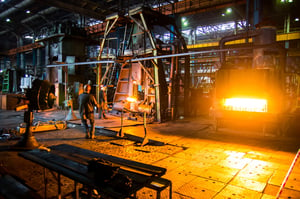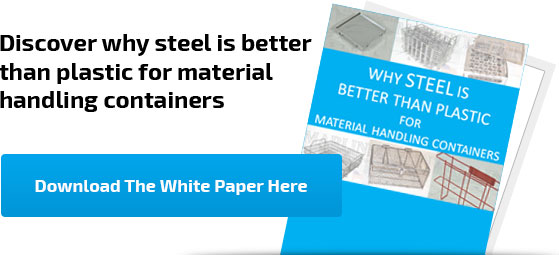 For years, Marlin Steel has helped clients solve tough parts finishing process challenges with custom-tailored basket designs. From basic parts cleaning baskets, to baskets meant for use in particularly harsh processes such as vapor degreasing, Marlin’s engineering team has extensive experience in overcoming design challenges large and small alike.
For years, Marlin Steel has helped clients solve tough parts finishing process challenges with custom-tailored basket designs. From basic parts cleaning baskets, to baskets meant for use in particularly harsh processes such as vapor degreasing, Marlin’s engineering team has extensive experience in overcoming design challenges large and small alike.
So, when clients have a problem overcoming issues such as their wire baskets for heat treat application overheating and getting damaged, Marlin’s degreed engineers simply say: “We can help with that!”
How? Here are a few ways that Marlin’s degreed engineers combat issues such as baskets overheating:
#1: Check What Kind of Material the Basket is Made of
While many metals have high melting points, as most metals get hot, they tend to lose their structural integrity. This is why many custom metal form manufacturers talk about “operating temperature” rather than melting point when discussing what temperatures a basket’s materials can take.
For example, plain steel has a melting point of about 2,500°F (1370°C). However, the maximum recommended operating temperature of steel is closer to 1,600°F (871°C). Beyond this temperature, plain steel loses too much of its tensile strength, and may be easily deformed by the weight of carried parts.
This is why old-world blacksmiths would superheat metal before bending it into horseshoes or other shapes, as the heat would make metal more malleable.
Because different basket materials have different temperature tolerances, one of the first things that mechanical engineers check in a basket design is the material used for the basket. By comparing the material choice to the temperatures used in the process, the engineer can establish if the basket’s materials are up to snuff for the process.
#2: Confirm the Process’ Operating Temperatures and Length of Basket Exposure
Another factor that contributes to a basket becoming damaged by overheating is the length of time that a basket spends in a given temperature range. Generally speaking, the longer the basket is exposed to high temperatures near its operating limit, the greater the chance there is of damage.
For example, scaling can occur on the surface of stainless steel during a prolonged heat treat process. Scaling, or the oxidation of metal surfaces in high-temperature environments, can compromise the corrosion resistance of stainless steels.
Most of the time, manufacturers deal with scaling by pickling the steel in a specialized solution that passivates the steel and removes loose layers of excess material.
However, pickling steel baskets takes time, time which could be spent on completing parts and filling orders. So, preventing scale from forming in the first place is typically a more economical solution.
By checking how long a basket will be exposed to specific temperatures for, Marlin’s degreed engineers can make more informed decisions about how to prevent scaling from long exposure.
#3: Applying a Heat-Resistant Coating
If the base temperature resistance of the basket’s material is sufficient to withstand the heat of your parts finishing process, but the baskets have a problem with scaling, then one way that Marlin’s degreed engineers might solve the issue is through the use of special finishes that are temperature-resistant.
With a coating of a high temperature-tolerant material, a basket can be made resistant to the effects of scaling, as oxides won’t have as much access to the steel of the basket. Examples of these high-temp coatings include certain ceramic coatings and even fluoropolymers such as Chemours’ trademark TeflonTM product.
The issue is that many coatings, even high-temperature ones, are less tolerant of temperature extremes than specialized materials such as Inconel (which already has its own protective oxide layer when subjected to extreme heat).
Because of this, applying a coating for heat treat applications may not always work. To check this issue, Marlin’s mechanical engineers run every basket design through a physics simulation software to verify that the basket’s materials, coating, and overall design are able to withstand the entirety of the process.
These are just a few of the things that Marlin’s mechanical engineers do when working to overcome a problem such as baskets overheating in a heat treat process.
With the right design, a custom steel wire basket can help make your manufacturing process more efficient and effective, saving you time and money.



.gif)


